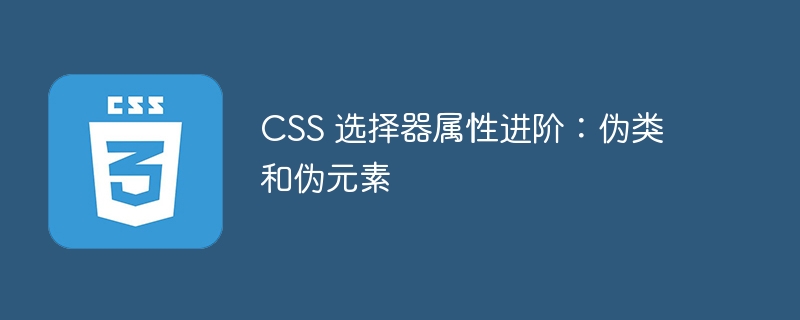

Advanced CSS selector attributes: pseudo-classes and pseudo-elements
Introduction:
In CSS, selectors are an important concept that can help Developers accurately select DOM elements and apply styles. In addition to common element selectors (such as tag selectors and class selectors), CSS also provides two selector attributes, pseudo-class and pseudo-element, which can further enhance the functionality of selectors. This article will introduce the usage of pseudo-classes and pseudo-elements, and provide specific code examples, hoping to help readers better understand and apply these two properties.
1. Pseudo-classes:
Pseudo-class is a CSS selector that can select elements under specific states or conditions. Common pseudo-classes include :hover (mouse hover), :visited (link has been visited), :focus (get focus), etc. Here are some usage examples of pseudo-classes:
button:hover { background-color: red; }
a:visited { text-decoration: underline; }
input:focus { outline: 2px solid blue; }
2. Pseudo-elements:
Pseudo-elements are another selector of CSS. Specific parts of DOM elements can be selected. Common pseudo-elements include ::before (insert content before the element), ::after (insert content after the element), etc. Here are some examples of pseudo-element usage:
p::before { content: "("; } p::after { content: ")"; }
.clearfix::after { content: ""; display: table; clear: both; }
p::first-letter { text-transform: uppercase; }
Conclusion:
Pseudo classes and pseudo elements are important attributes in CSS to further enhance the functionality of selectors, and they can help development or accurately select DOM elements and apply styles. In actual development, we can choose to use pseudo-classes and pseudo-elements according to specific needs to achieve richer style effects. Through the introduction and sample code of this article, I believe that readers have a preliminary understanding of pseudo-classes and pseudo-elements, and I hope it can help readers better master and apply these two attributes.
The above is the detailed content of Advanced CSS selector properties: pseudo-classes and pseudo-elements. For more information, please follow other related articles on the PHP Chinese website!




